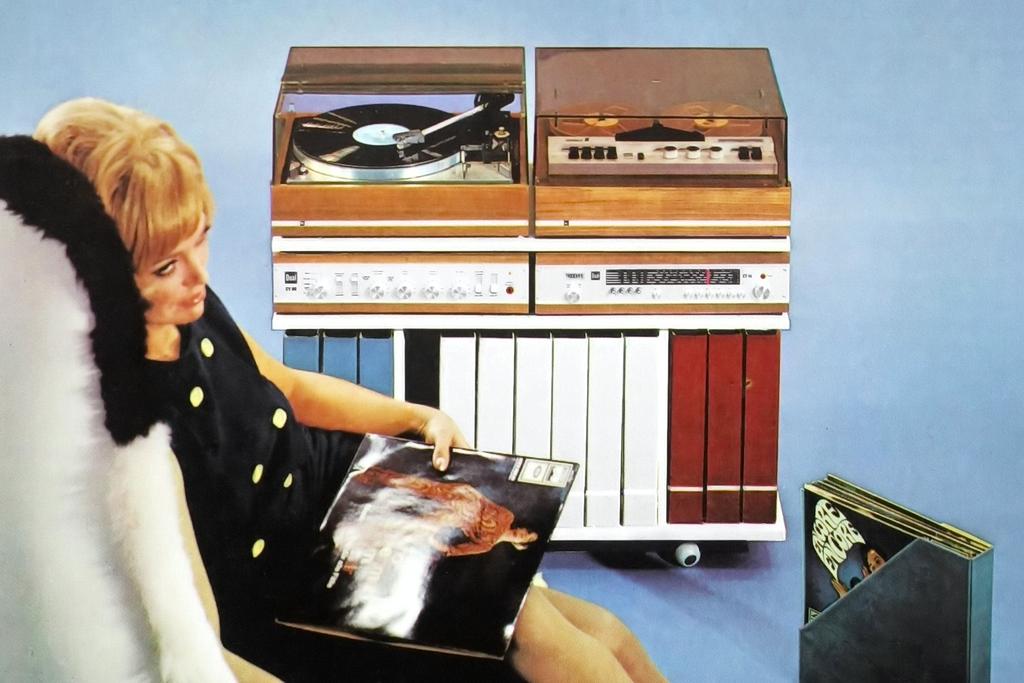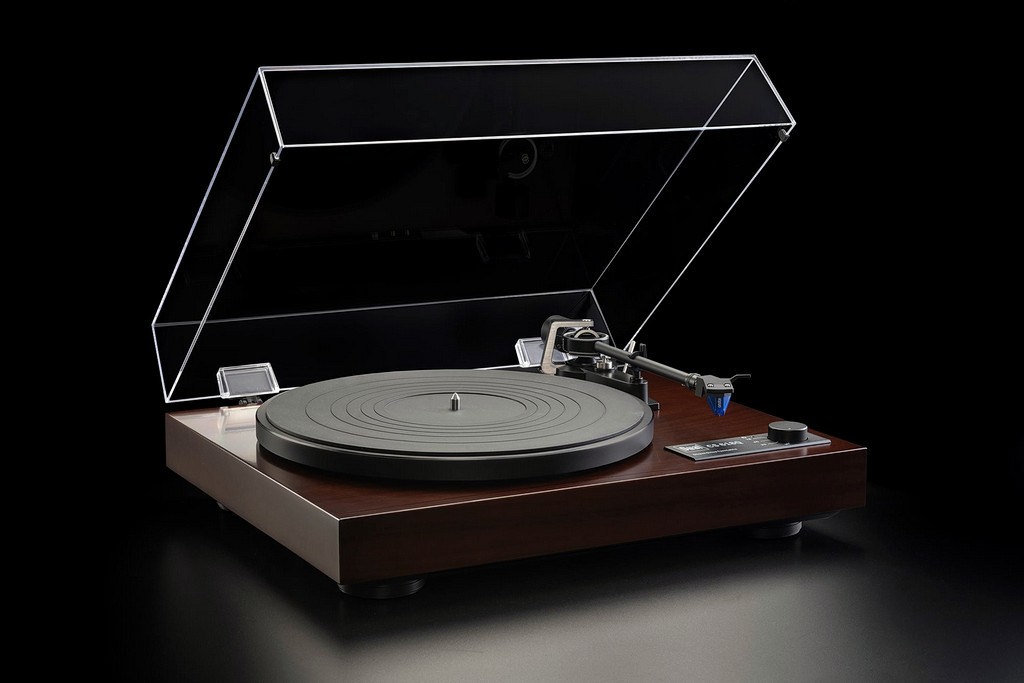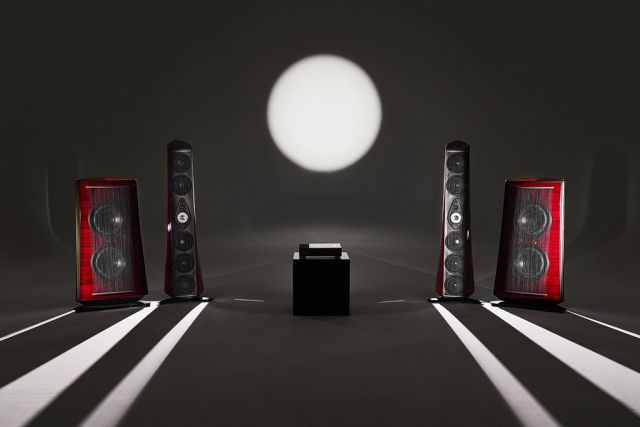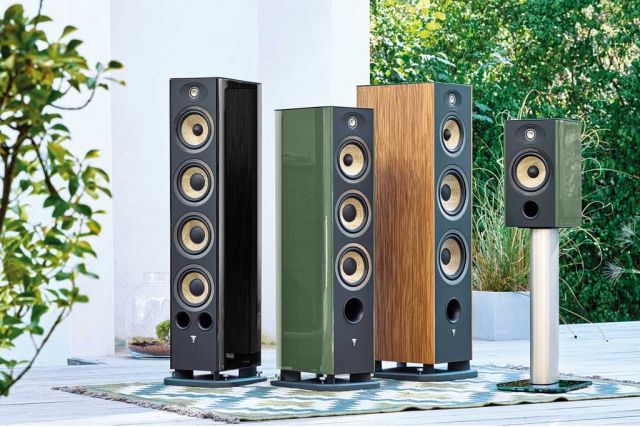
- Interviews
- Posted
Josef Zellner - Dual
Dual's beginnings can be traced back to 1900 when brothers Christian and Joseph Steidinger began manufacturing watches and turntable parts. Ten years later, the Gebrüder Steidinger company began manufacturing power supplies to allow turntables to operate using mains electricity. It was not long before Dual started making their turntables. After the war, they became the largest manufacturer of this type of equipment in Europe, employing over 3,000 people in several factories. Later the brand expanded to offer customers complete hi-fi systems with amplifiers, tuners, cassette players, and speakers.
Dual's problems began in the early 1980s when the audio equipment market was conquered by Japanese competition. Customers no longer looked down on this gear, which proved to be better and more durable than they had previously thought. For several years Dual generated only losses, so in 1981 it went bankrupt. The company was taken over by a French electronics manufacturer Thomson-Brandt, which had no intention of investing in the factory in St. Georgen, first reducing the number of employees and then, in 1993, closing it for good. No wonder - those were the times of Compact Disc's domination, and probably no turntable maker was doing well. In 2007, the next owner, DGC, licensed the production and sale of turntables under the Dual brand to Alfred Fehrenbacher, based in St. Georgen. In 2018, DGC was taken over by Josef Zellner, resulting in Dual's products being showcased at IFA in Berlin a year later. In 2020, the new owner started the next phase of Dual's reactivation, changing the company name from DGC GmbH to Dual GmbH and releasing the Primus Maximus turntable, designed and manufactured in Germany. Today Dual is headquartered in Landsberg am Lech, Bavaria. It has its own research and development center in Kiefersfelden and even a museum, created by Alfred Langer - an audiophile, collector, and turntable specialist who manufactures both complete units and OEM parts under his name.
After reviewing the Dual CS 418 turntable, I had the opportunity to meet the man responsible for reactivating this highly regarded audiophile brand. Dr. Josef Zellner started in 1992 as an assistant to the board of the Schneider Rundfunkwerke AG, Dual's parent company at the time. In the middle of 1993, he took over the role of export manager at Dual. At the end of 1995, Josef made his last turntable deal before returning to university. In 2000, Josef joined the DAB Bank in Munich, where he was head of human resources, head of sales, and finally a board member. He remained in contact with his former Dual colleagues and in 2017 he finally returned to the company where he originally started. He bought Dual GmbH from Christoph Homberg, a former colleague from the Schneider era, and took on the role of Managing Director. His vision to re-establish Dual as a worldwide manufacturer of hi-fi turntables has been taking shape ever since.
Dual is a company with a fascinating and long history. When I searched the available information about it, your name appeared quite late, in 2018, when you took over the DGC company holding the license to manufacture and sell turntables under that brand. However, you were involved with Dual much earlier, weren't you?
Yes, indeed, it is a by far longer story. I joined Schneider Rundfunkwerke AG in 1992 after my degree. Schneider had bought Dual in 1988 from Thomson, France. I first worked as an Assistant to the Speaker of the Board and became Head of Credit Management beginning of 1993. In this function, I was responsible for integrating the Dual Credit Management Department into the Schneider organization. At the end of 1993, I was given responsibility for the Dual Export Department, which was also integrated into Schneider. My last deal by that time was selling 40 pieces each of Golden Stone, Silver Stone, and Golden 1 to Japan. In 1995, I left Dual to do a Ph.D. degree at University.
After 1981 there's a gap in Dual's history. What was the reason for it, and how was the brand holding up during that time?
In 1982, Dual went bankrupt and, consequently, was sold to Thomson, which by that time was a big electronic firm in France. Thomson did invest quite some money in restructuring Dual and making production more efficient. The multi-functional chassis, used until the end of last year, was engineered during the Thomson period. In 1988, Dual was sold to Schneider Rundfunkwerke AG.

The company's current headquarters are located in Landsberg am Lech. Still, it also has strong ties to the Black Forest town of St. Georgen, which at first glance doesn't look like the hometown of any industrial powerhouse. However, the German Phono Museum is listed as the first attraction on St. Georgen's official website. Can you explain this phenomenon?
Dual was founded in 1907 by two brothers, Christian and Josef Steidinger, in St. Georgen, Black Forest. They had specialized in producing precision parts for clockmakers. But they also worked on designing a new spring-loaded drive for gramophones. These were the roots of an emerging turntable industry in the Black Forest.
Leaving aside ownership changes and legal issues, the decline in popularity of turntables in the era of Compact Disc's dominance was probably natural. However, the renaissance of analog recordings has been going on for quite a few years now. A substantial increase in sales of vinyl records was already noted in 2008. Many turntable manufacturers have already rebuilt their position and generated significant profits, yet Dual came back to life in 2018, with the first "mass-market" products released in 2020. Wasn't it a bit too late?
Well, Dual products have always been there, as we had given license to Fehrenbacher GmbH for producing turntables under our brand. When I bought Dual in 2018, I decided to take back control and design a new product range. It takes time to design and manufacture new products, and it is never too late to do the right thing.

Your first turntable launched after the 2018 comeback, the Primus Maximus, was designed and built by Alfred Langer - an audiophile, vinyl collector, and turntable specialist who manufactures both complete units and OEM parts under his brand. Does this flagship model have anything in common with Dual's older machines?
Alfred, without doubt, is an audiophile, vinyl collector, and turntable specialist, but in the first place, he has been a Dual enthusiast since he was a teenager. I have never met someone who knows as much about Dual as Alfred Langer. And all this knowledge has found its manifest in our Primus Maximus. Just look at the quintessential twin gimbal tonearm design, which uses the same gimbal shape as 1249 from 1975 as an example.
It's pretty obvious that producing only high-end turntables is not the way to conquer the market. Some people thought that you would be introducing cheaper models step by step, but instead, you have introduced the CS 418 and CS 518, which mark the other end of the price range. In the coming years, will you be closing that gap?
You are correct! With CS 418 and CS 518, we aim at the mass market with high-quality turntables at affordable prices. This is what Dual always stood for. Our next step indeed is to close this gap with CS 618 and CS 718. However, there will also be a range of fully automatic players to complement a traditional Dual product range. Soon, we will provide CS 329, CS 429, and CS 529, all fully automatic players.

The CS 418 is a good and inexpensive turntable. Still, it features many elements that we will also see in machines such as Reloop Turn 3, TEAC TN-400BT, ELAC Miracord 50, Audio-Technica AT-LPW40WN, or Thorens TD 402 DD. For some time, I thought that most budget turntables were made in two or three factories. How do you want to stand out from the crowd apart from the brand and everything its name implies?
These days the major turntable manufacturing companies are located in the Far East. They offer a wide range of standard components. For budget reasons, we also integrate some of these components into our design. For example, the entire plinth with the motor control is a Dual design. This combination has enabled us to offer good quality at an affordable price, including a superior pick-up such as the Ortofon 2M Red.
The critical component in any turntable is the cartridge. Many budget manufacturers seem to underestimate this by fitting ridiculously cheap cartridges. The Ortofon 2M Red included in the CS 418 and CS 518 is very decent, but don't you think that the same turntable with an even better cartridge, such as Sumiko Pearl, Audio-Technica AT-VM95SH, Goldring 2100, or Denon DL-110, could cause a huge commotion on the market?
Of course, there are better cartridges on the market, but it is also a question of the available budget. It is very important that our tonearms will not limit better cartridges. There is always the opportunity of doing an upgrade.
Soon your offer will include a turntable even cheaper than the CS 418. Is such a product needed? Aren't you afraid that introducing such an inexpensive device may damage the company's reputation?
You are talking about CS 329. As a plug-and-play turntable, the CS 329 is ideal for new vinyl enthusiasts. Don't you think it makes sense to have a non-adjustable turntable that still offers a good product quality? It definitely does!

All of the higher Dual models have Direct Drive instead of a rubber belt. Why? Is this solution better, in your opinion?
You can achieve excellent results with both concepts. However, we believe that a well-designed Direct Drive has got some significant benefits. But as you know, this always is a question of philosophy.
From an amateur point of view, all Dual turntables look alike. We are moving up in terms of technology and precision, but the concept remains the same. There is no point where we get unique sculptures made of aluminum and acrylic instead of simple plinths. There are no externally mounted motors, no massive flywheels, no tangential tonearms or platters driven by large magnets. Even the flagship Primus Maximus looks wonderfully simple, although technically, it's very advanced. Will it stay that way? Wouldn't you like to show off some bold experiment to the world, if only to attract audiophiles' attention?
No, we will not do that. It is just not our philosophy. As you can tell from our Primus Maximus, you technically get the best you can. But you don't spend money on unnecessary things or things that could even be counterproductive. Finally, visual elements are always a matter of taste.
In the past, Dual was known for the fact that its turntables could be purchased in the form of the drive itself, without the base, which one had to make yourself. Many people were happy to do this. I have heard that you are now making plinths matching these iconic models, so will you one day return to this idea and offer customers a 'turntable without a plinth'?
No, for the time being, we definitely don't intend to offer new turntables without a plinth. The plinth you have mentioned is only an upgrade to old turntables.

If you don't mind me asking, how's your company doing in terms of sales? For some 'returning' brands, it can take at least a couple of years to start generating income, but on the other hand, there is no shortage of people willing to buy a turntable.
Dual stands for about 20 million euro turnover. We intend to grow by about 20% per year over the next five years. Let us see where we stand in 2026.
How do you see Dual's future? Are there any plans to go back to making electronic components such as amplifiers and phono preamps?
We will do that in the future. It did take us 2,5 years to bring our new turntable range to the market. I guess it will also take two years to develop proper high-quality components like amplifiers and phono preamps. So, give us a bit more time, and we might surprise you with something really good.
What stereo system do you use privately at home?
Personally, I use a production sample of the CS 618Q at the moment, with a Dual amplifier CV 441 and Dual speakers CL 9200, both bought in 1993. But there is, of course, my old Dual Golden 11, which I use if I don't try out new products.





